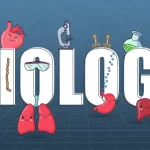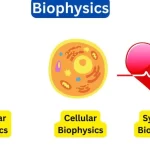
10 Cutting-Edge Strategies for Genomic Data Analysis: A Comprehensive Guide
February 22, 2025The field of genomics is rapidly evolving, much like the transformative shifts seen during the Industrial Revolution. To remain at the cutting edge, researchers must adopt innovative methodologies that enhance data analysis efficiency, accuracy, and scalability. By integrating machine learning, cloud computing, and multi-omics approaches, scientists can uncover deeper biological insights and drive groundbreaking discoveries. Additionally, implementing advanced variant calling techniques and robust data visualization tools improves data interpretation and reliability. What other essential strategies should professionals employ to optimize genomic research?
Key Takeaways
- Harness Machine Learning: Utilize support vector machines (SVMs) and random forests for precise genomic classification and predictive modeling.
- Integrate Multi-Omics Data: Combine genomics, transcriptomics, proteomics, and metabolomics for a comprehensive understanding of biological processes.
- Utilize Cloud Computing: Leverage scalable, cost-effective, and secure cloud platforms for handling extensive genomic datasets.
- Employ Advanced Variant Calling: Implement high-confidence techniques to detect and validate genetic variations.
- Optimize Data Visualization: Transform complex genomic information into clear, interpretable graphical representations.
1. Revolutionizing Genomic Analysis with Machine Learning
How does machine learning reshape genomic data analysis?
Machine learning enables researchers to uncover previously unattainable patterns in genomic datasets. Supervised learning techniques train models on labeled datasets, allowing for accurate predictions of genetic traits and disease susceptibility. These models efficiently handle high-dimensional data, making them invaluable in identifying disease-associated genes.
Key Machine Learning Techniques
- Supervised Learning:
- Unsupervised Learning:
- K-Means and Hierarchical Clustering: Group similar genetic sequences to reveal novel gene functions and interactions.
- Principal Component Analysis (PCA): Reduces dimensionality, preserving crucial genetic variance patterns.
By integrating both supervised and unsupervised techniques, machine learning accelerates genomic discoveries, leading to breakthroughs in precision medicine and genetic variability studies.
Leveraging Machine Learning
Machine learning is revolutionizing the analysis of complex genomic data by uncovering patterns and insights previously unattainable. Supervised learning techniques, such as SVMs and random forests, allow researchers to train models on labeled datasets, enabling accurate predictions of genetic traits and disease susceptibility. These algorithms excel in handling high-dimensional data, making them invaluable for identifying specific gene expressions linked to various conditions.
Unsupervised clustering methods, like k-means and hierarchical clustering, group similar genetic sequences without prior labeling, aiding in the discovery of novel gene functions and interactions. These techniques are particularly useful in exploratory data analysis, where the underlying structure of the data is unknown. For example, unsupervised clustering can reveal disease subtypes based on genetic markers, paving the way for personalized medicine.
By integrating machine learning into genomic research, scientists can accelerate discoveries and enhance the accuracy of genetic predictions. This interdisciplinary approach drives innovation and precision in genomic analysis.
2. Unlocking the Power of Cloud Computing in Genomics
How does cloud computing enhance genomic data analysis?
Cloud computing offers dynamic, scalable resources crucial for managing and analyzing extensive genomic datasets. This technology minimizes the reliance on costly on-premises infrastructure while providing robust security and computational power.
Key Benefits of Cloud Computing
Scalable Data Storage
- Elastic Storage Capacity: Adapts to fluctuating dataset sizes, ensuring uninterrupted access to genomic data.
- Advanced Data Compression: Reduces storage costs and accelerates data transfers.
- Automated Archive Management: Efficiently organizes and retrieves historical genomic data.
- Enhanced Security: Implements encryption and authentication protocols to protect sensitive genetic information.
Utilizing Cloud Computing
Cloud computing offers scalable data storage solutions that adapt to the growing size of genomic datasets. It provides enhanced computational power necessary for complex analyses, significantly reducing processing time. Additionally, cloud services can lower operational costs by eliminating the need for extensive on-premises infrastructure.
Enhanced Computational Power
Modern cloud platforms integrate GPU acceleration and quantum computing, significantly improving genomic data processing speeds:
| Technique | Speed Improvement | Use Case |
|---|---|---|
| Quantum Computing | 1000x | Complex optimization problems |
| GPU Acceleration | 50-100x | Sequence alignment, variant calling |
| Traditional CPUs | Baseline | General computational tasks |
These technologies eliminate computational bottlenecks, enabling researchers to process large-scale genomic data efficiently.
Cost-Efficiency Benefits
By leveraging pay-as-you-go models, researchers can optimize costs without compromising computational performance. Benefits include:
- Scalability: Platforms like AWS and Google Cloud dynamically adjust to processing demands.
- Reduced Maintenance: Eliminates the need for dedicated IT infrastructure and personnel.
- On-Demand Resource Allocation: Ensures optimal computational resource utilization.
- Affordable Data Storage: More cost-effective than traditional data centers.
Cloud computing represents a paradigm shift, making genomic research more scalable, efficient, and financially sustainable.
Scalable Data Storage
Cloud platforms provide elastic storage capacity, advanced data compression, robust archive management, and enhanced data security. These features ensure efficient storage and retrieval of large datasets, enabling researchers to focus on their core scientific inquiries.
Enhanced Computational Power
Quantum computing and GPU acceleration offer unprecedented speed and efficiency in processing genomic data. Quantum computing excels in solving complex optimization problems, while GPU acceleration speeds up tasks like sequence alignment and variant calling.
Cost-Efficiency Benefits
Cloud computing’s pay-as-you-go model allows precise budget allocation and resource optimization. It reduces maintenance costs and ensures optimal use of computational resources, making it a cost-effective solution for genomic data analysis.
3. Integrating Multi-Omics Data for Comprehensive Insights
Why is multi-omics integration crucial in genomic research?
By merging genomic, transcriptomic, proteomic, and metabolomic datasets, researchers obtain a holistic view of biological pathways, leading to deeper insights into disease mechanisms and therapeutic targets.
Key Advantages of Multi-Omics Approaches
- Enhanced Biomarker Discovery: Identifies potential therapeutic targets through cross-omics comparisons.
- Improved Disease Classification: Differentiates disease subtypes based on multiple biological layers.
- Pathway Reconstruction: Maps complex metabolic and regulatory pathways, aiding in drug discovery.
Advanced computational frameworks such as network analysis and pathway enrichment facilitate the interpretation of integrated multi-omics datasets, leading to novel biological discoveries.
Integrating Multi-Omics Data
Integrating multi-omics data requires harmonizing diverse data types from genomics, transcriptomics, proteomics, and metabolomics. Cross-platform data integration ensures that data from different technologies can be effectively combined for comprehensive analyses. Multi-omics data visualization techniques are essential for interpreting complex relationships and biological insights.
4. Implementing Advanced Variant Calling for Precision Genomics
How does advanced variant calling improve genomic data accuracy?
Variant calling algorithms detect single nucleotide polymorphisms (SNPs), insertions, deletions, and structural variants in genomic sequences. Cutting-edge tools like GATK, DeepVariant, and FreeBayes provide high-accuracy variant detection, minimizing false positives.
Best Practices for Variant Calling
- Apply Multiple Algorithms: Cross-validation ensures accurate variant identification.
- Use Deep Learning Models: AI-enhanced variant calling enhances precision.
- Perform Quality Control: Employ tools like FastQC and MultiQC to assess sequence integrity.
These approaches refine genetic variant interpretation, advancing personalized medicine and genomic diagnostics.
5. Optimizing Data Visualization for Better Genomic Interpretation
Why is visualization essential in genomic research?
Genomic datasets are inherently complex, making effective visualization tools indispensable for data interpretation. Advanced tools such as Circos, IGV, and UCSC Genome Browser facilitate the graphical representation of genomic variations, gene expression patterns, and structural rearrangements.
Effective Data Visualization Techniques
- Genome Browsers: Enable interactive exploration of gene sequences and variations.
- Heatmaps & Cluster Plots: Represent gene expression levels and hierarchical relationships.
- Circos Plots: Illustrate large-scale structural genomic variations.
Integrating these visualization techniques simplifies complex genomic interpretations, making data-driven insights more accessible.
Harmonizing Diverse Data Types
Data standardization and metadata integration are critical for aligning diverse datasets. Normalization techniques, dimensionality reduction, batch effect correction, and cross-validation ensure robust and reproducible integrated datasets.
Cross-Platform Data Integration
Tools like MOFA and iCluster+ facilitate the integration of disparate data types, enabling a unified analytical framework. Ensuring platform compatibility and scalable computational resources are essential for accurate and reproducible results.
Multi-Omics Data Visualization
Interactive dashboards and color coding transform complex datasets into comprehensible formats. Layered data integration, scalability, customizable visuals, and interactive filtering enhance the interpretability of multi-omics data.
Advanced Sequence Alignment
Advanced sequence alignment techniques, such as Burrows-Wheeler Transform (BWT) and Hidden Markov Models (HMMs), ensure high-resolution genomic analyses. Error correction methods and alignment scoring enhance the reliability of sequence data, enabling researchers to derive meaningful insights.
Variant Calling Techniques
Variant calling involves the precise identification and classification of genetic variations. Key considerations include read depth, algorithm selection, quality filtering, and validation. Deep sequencing and machine learning approaches enhance the accuracy and predictive power of variant calling.
Functional Annotation Tools
Functional annotation tools link genomic variants to known genes, pathways, and phenotypes. Gene ontology (GO) terms and pathway enrichment analysis provide insights into the biological significance of genetic variations. Integrating multi-omics data and leveraging machine learning algorithms enhance the predictive power of these tools.
Data Visualization Strategies
Effective data visualization strategies transform complex genomic datasets into clear, interpretable visuals. Interactive dashboards, color coding, scalability, and customization enhance the interpretability and accessibility of genomic information.
Quality Control Methods
Quality control methods ensure the reliability and accuracy of genomic data. Meticulous sample preparation, data normalization, and error correction techniques enhance data integrity and reproducibility.
Scalable Data Storage
Scalable data storage solutions, such as cloud-based platforms, provide elastic storage capacity, advanced data compression, robust archive management, and enhanced data security. These features ensure efficient storage and retrieval of large genomic datasets.
Collaborative platforms revolutionize genomic data analysis by enabling real-time data sharing, enhancing team collaboration, and streamlining workflows. Integrated analysis tools provide a unified environment for comprehensive data interpretation.
Frequently Asked Questions
- Ethical Considerations: Informed consent and data ownership are critical ethical considerations in genomic data analysis.
- Data Privacy: Data encryption and consent protocols ensure the privacy and security of genomic data.
- Challenges in Interpretation: Data normalization and variant calling are the main challenges in genomic data interpretation.
- Keeping Up with Technologies: Online courses and industry conferences help researchers stay updated with rapidly evolving genomic technologies.
- Programming Languages: Python and R are the most useful programming languages for genomic data analysis.
Conclusion
The future of genomic research relies on the seamless integration of machine learning, cloud computing, multi-omics data, variant calling, and advanced visualization techniques. These innovations accelerate data processing, enhance accuracy, and uncover new biological insights. By adopting these cutting-edge strategies, researchers can stay ahead in the ever-evolving field of genomics, paving the way for breakthroughs in precision medicine, disease modeling, and therapeutic development.


















